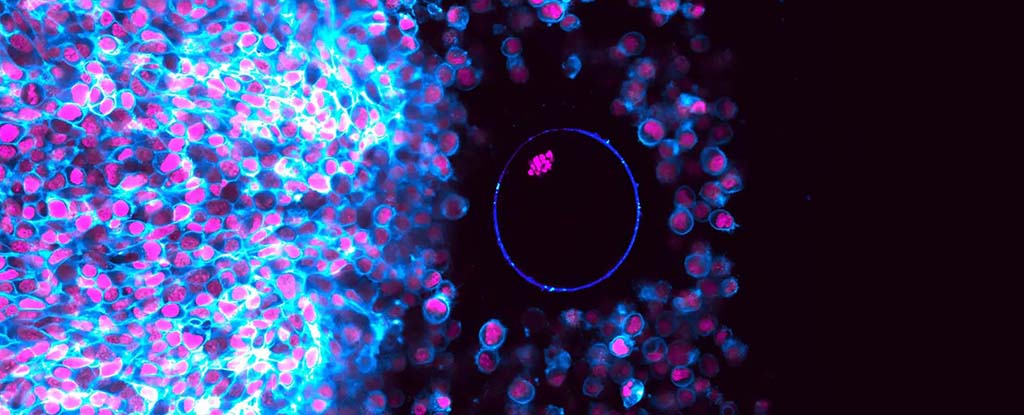ARTICLE AD
 An artist's impression of the experiment. (University of Southampton)
An artist's impression of the experiment. (University of Southampton)
Acting on a tiny particle levitating in a magnetic trap, physicists have just measured the smallest gravitational pull ever recorded.
The particle weighed just 0.43 grams. And the strength of the gravitational force at play was on the scale of attonewtons (10-18 newtons). That's small enough to be right on the verge of the quantum realm, teasing the possibility of finally figuring out how classical physics and quantum mechanics interact.
"For a century, scientists have tried and failed to understand how gravity and quantum mechanics work together," says physicist Tim Fuchs of Leiden University and the University of Southampton, who led the research.
"Now we have successfully measured gravitational signals at the smallest mass ever recorded, it means we are one step closer to finally realizing how it works in tandem."
The problem of quantum gravity can perhaps best be described as intractable, at least so far. It has to do with our frameworks for explaining the Universe.
Classical physics – that is, gravity – explains how things work on most scales. When you get really teeny-tiny, though, down to atomic and subatomic scales, gravity just doesn't work to explain what we see.
For this, physicists use quantum mechanics, and it's great. But, just as classical physics can't be applied to quantum scales, quantum mechanics doesn't work for classical scales. And yet, somehow, the Universe works. This leads scientists to believe that a resolution between the two frameworks remains to be found.
One potential way to interrogate the problem is by probing gravity on really, really tiny scales. That, however, is harder than it might appear: gravity is everywhere in the Universe, and teasing out a quantum scale signal in the environment of Earth's gravity is no mean feat.
To circumvent this dilemma, Fuchs and his team used something called a superconducting magnetic trap. A small trap made of tantalum is cooled to a critical temperature of 4.48 Kelvin (-268.67 Celsius, or -451.6 Fahrenheit).
In the chamber, the particle is levitated. This consists of three 0.25-millimeter neodymium magnet spheres and one 0.25-millimeter glass sphere stuck together to create one particle around 0.43 grams in mass.
The apparatus is suspended from springs in a mass spring system to shield the experiment from external vibrations, and the cryostat is placed on pneumatic dampers to limit vibrations from the building.
Finally, an electrically driven wheel with a set of three 2.45-kilogram brass masses is positioned to create a gravity gradient. This produced a measurable effect on the particle – a gravitational force of just 30 attonewtons.
It's the smallest scale on which physicists have measured gravity, beating the record set just three years ago with two 90-milligram gold spheres.
And this, the researchers say, is just a first step. Now that they have demonstrated the efficacy of their experiment, they aim to push it so much further.
"From here we will start scaling the source down using this technique until we reach the quantum world on both sides," Fuchs says. "By understanding quantum gravity, we could solve some of the mysteries of our universe – like how it began, what happens inside black holes, or uniting all forces into one big theory."
There's always going to be more to do – but now it's starting to feel like the answers are just a quantum leap away.
The team's research has been published in Science Advances.

 8 months ago
55
8 months ago
55 

